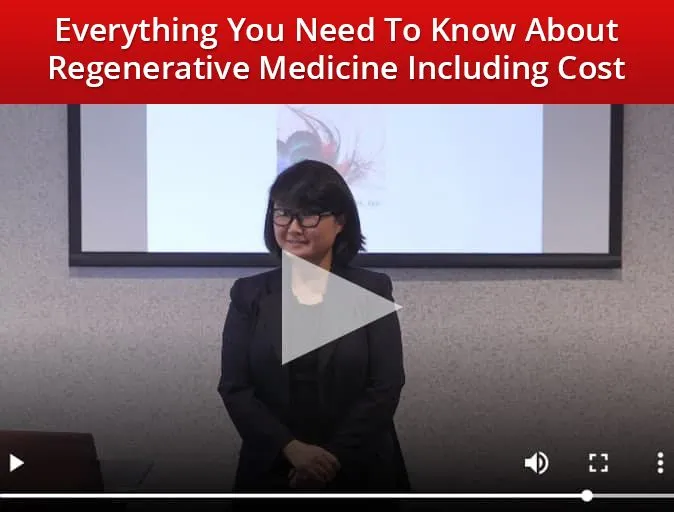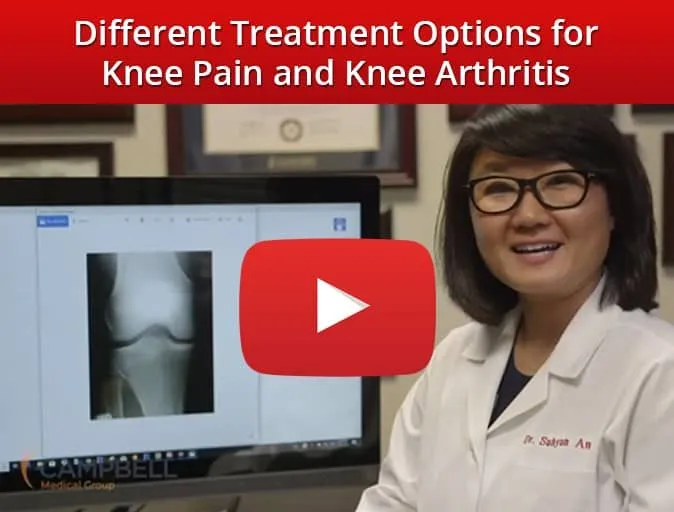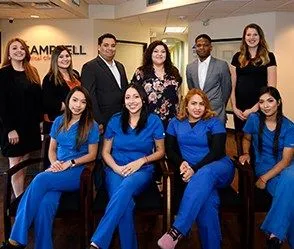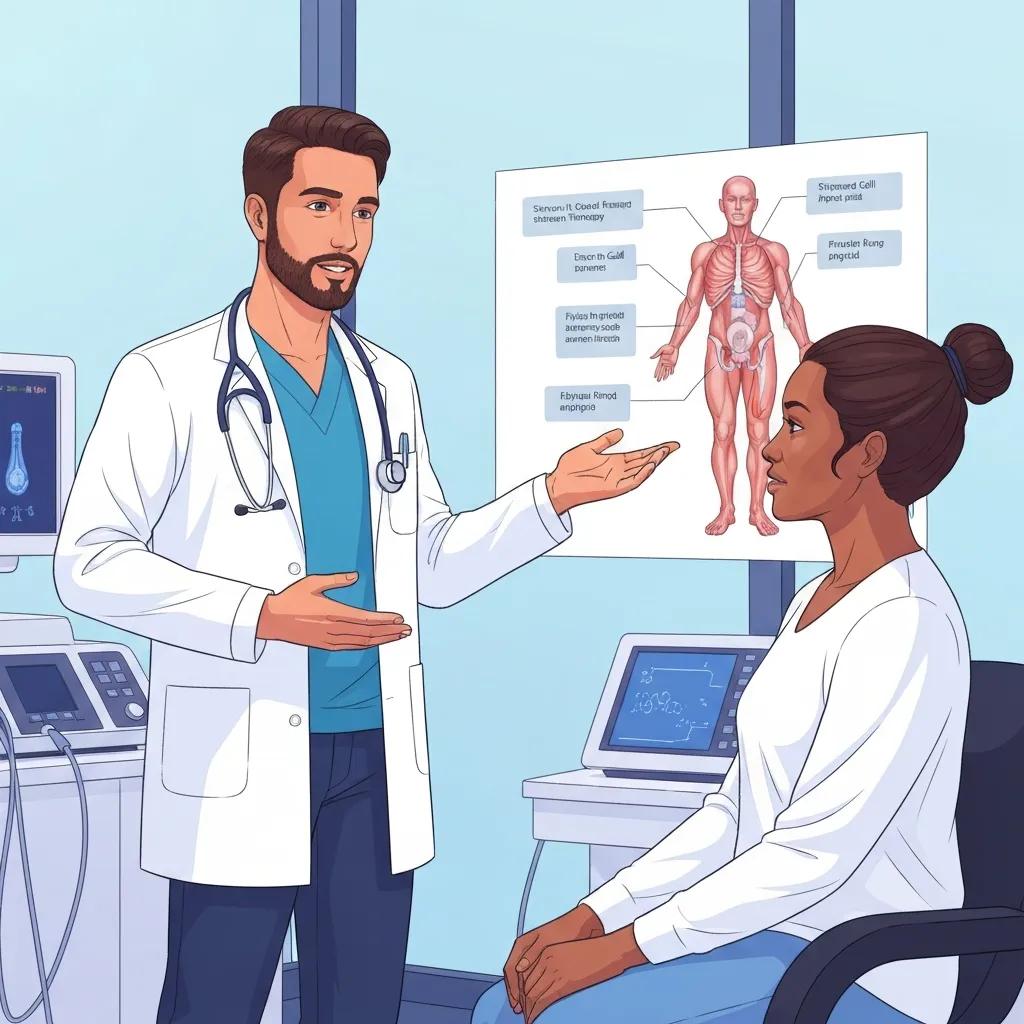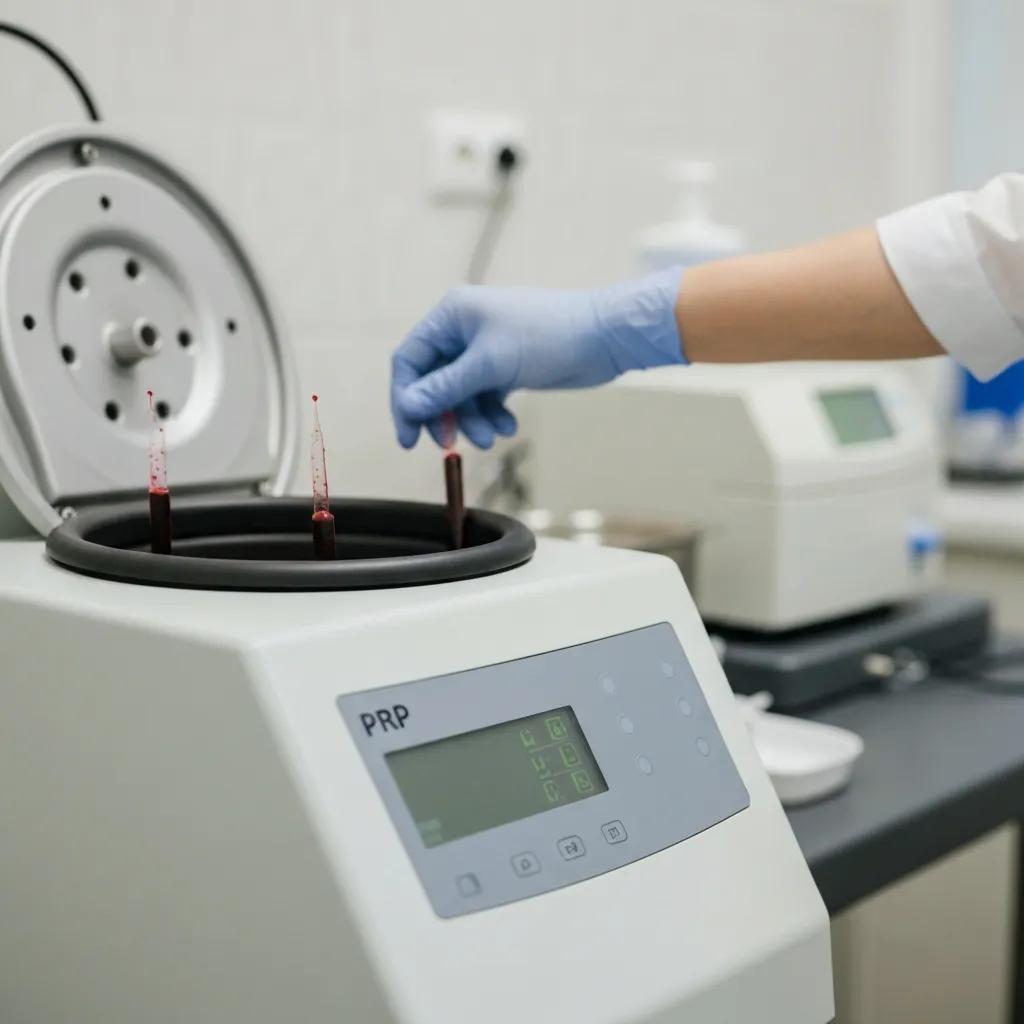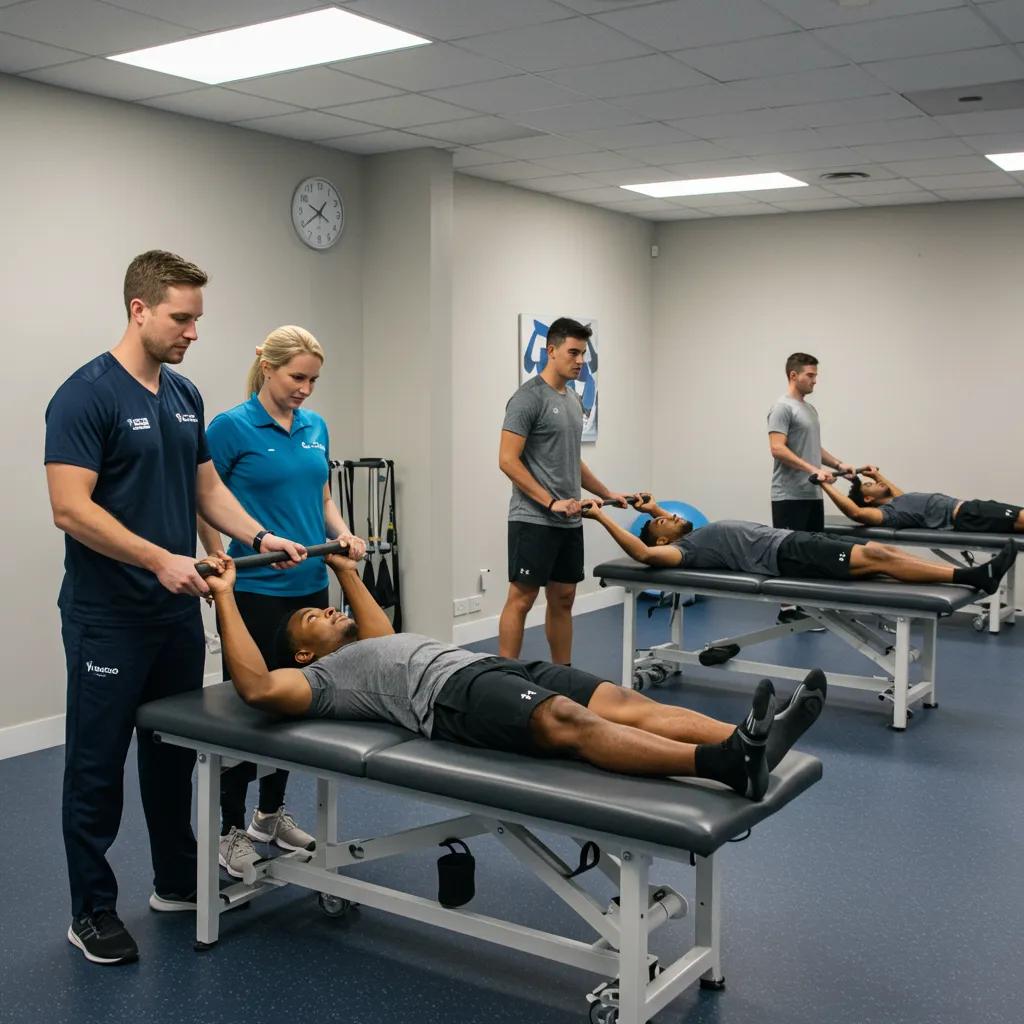
Navigating Sports Injury Treatment in Houston, TX: Your Complete Recovery Guide
Sports injuries can be a significant hurdle for athletes at any level. In Houston, TX, getting expert advice from orthopaedic sports injury specialists, such as Dr. Suhyun An, is key to safely returning to your game. This guide walks you through the entire recovery process, from identifying sprains and strains to exploring advanced regenerative therapies and innovative rehabilitation treatments like Pulsed Electromagnetic Field (PEMF) therapy. We’ll also show you how personalized, non-invasive solutions from Campbell Health Center (Houston, TX), led by experts like Dr. Suhyun An, can help you avoid pain medications and surgery, complementing your care options in Houston, TX.
Here’s what you’ll discover:
- The most common injuries seen in local sports clinics in Houston, TX and how to recognize pain, swelling, or limited movement.
- How Houston, TX practitioners diagnose conditions using physical exams and imaging, and the importance of timely action.
- A comprehensive look at non-surgical treatments, including RICE, physical therapy, chiropractic support, pain management, bracing, and advanced therapies like PEMF.
- The role of regenerative medicine—like PRP and stem cell treatments—in speeding up healing and helping patients avoid surgery and reliance on pain medication.
- The stages of rehabilitation, realistic recovery timelines for different injuries, and factors influencing your progress.
- Proven strategies for preventing injuries, covering warm-ups, proper technique, strength, flexibility, nutrition, and hydration.
- How to choose the right Houston, TX specialist or clinic, and why Campbell Health Center’s expertise in non-surgical, non-pharmacological solutions can be a valuable resource
Essential Steps for Effective Sports Injury Recovery in Houston, TX
Recovering from a sports injury involves a structured approach that ensures athletes regain their strength and functionality while minimizing the risk of re-injury. Here are the key steps to follow for a successful recovery process.
- Initial Assessment – Consult a sports medicine specialist to evaluate the injury’s severity and determine the appropriate treatment plan.
- Follow the RICE Method – Implement Rest, Ice, Compression, and Elevation immediately after the injury to manage pain and swelling effectively.
- Engage in Physical Therapy – Work with a licensed physical therapist to develop a tailored rehabilitation program that focuses on restoring strength, flexibility, and range of motion.
- Consider Non-Surgical Treatments – Explore options like chiropractic care, pain management techniques, and advanced therapies such as Pulsed Electromagnetic Field (PEMF) therapy to enhance recovery.
- Utilize Regenerative Medicine – If necessary, discuss treatments like Platelet-Rich Plasma (PRP) therapy or stem cell therapy to promote healing and reduce recovery time.
- Adhere to Rehabilitation Phases – Progress through the acute, subacute, and functional phases of rehabilitation, focusing on specific goals at each stage to ensure a safe return to sports.
- Implement Injury Prevention Strategies – Once recovered, adopt practices such as proper warm-ups, strength training, and nutrition to minimize the risk of future injuries.
What Are the Most Common Sports Injuries in Houston, TX?
Sports injuries in Houston, TX typically involve sudden trauma or damage from overuse, affecting joints, ligaments, and muscles. Knowing the most frequent conditions helps you seek targeted treatment quickly and avoid complications that could prolong your recovery. Local trends align with national patterns: ankle sprains, knee ligament tears, shoulder impingements, and tendonitis are among the most common.
Acute injuries happen suddenly, like from an awkward landing, while overuse injuries develop from repetitive motions. Chronic conditions arise when minor irritations lead to ongoing inflammation. Understanding these categories helps Houston, TX clinics pinpoint the type and severity of your injury through examinations and imaging.
Which Types of Sports Injuries Should You Know About?
- Acute Injuries occur suddenly due to trauma, such as fractures or severe sprains, requiring immediate rest and evaluation.
- Overuse Injuries develop gradually from repetitive strain, including tendinitis and stress fractures, where early intervention can prevent chronic pain.
- Chronic Injuries persist over time when healing is incomplete, often involving joint degeneration or long-term soft-tissue inflammation that needs specialized rehabilitation.
These classifications guide treatment plans and your initial steps toward recovery, leading naturally into recognizing symptoms and seeking medical evaluation.
What Symptoms Indicate a Sports Injury?
Pain, swelling, and a reduced range of motion are key signs of a sports injury that needs attention. Sharp or throbbing pain during activity often points to tissue damage, while persistent swelling within 24–48 hours suggests inflammation. Difficulty with function, like bearing weight on an ankle, or unusual joint movement could indicate ligament or cartilage tears. Paying attention to these warning signs ensures you get timely care before issues worsen, preparing you for the diagnostic process.
When Should You Seek Medical Help for a Sports Injury?
You should consult a specialist if pain lasts longer than 48 hours, swelling increases significantly, or you experience joint instability. Immediate assessment is vital for suspected fractures, dislocations, or severe tears to prevent long-term damage. Seeking help beyond urgent care hours—ideally within the first week—allows Houston, TX clinicians to start non-surgical treatments early, optimizing healing and minimizing downtime before specific diagnostic steps are detailed.
How Is a Sports Injury Diagnosed in Houston, TX Clinics?
Accurate diagnosis starts with a thorough clinical assessment to determine the injury’s nature and severity. Houston, TX sports medicine providers begin with a detailed history and physical exam to identify affected areas and test functional limits. This initial evaluation sets the stage for selecting the right imaging tests and specialist consultations.
Following the exam, imaging tests confirm the diagnosis and help refine treatment plans. Advanced imaging like ultrasound, MRI, and CT scans provide precise views of soft-tissue damage and bone alignment, speeding up non-surgical interventions focused on rapid recovery. Understanding these diagnostic steps helps you know what to expect during your appointments.
What Happens During a Physical Examination for Sports Injuries?
A comprehensive physical exam involves visual inspection, palpation (touching), and functional tests to pinpoint pain sources and instability. Practitioners assess swelling, range of motion, strength, and joint laxity using standardized movements. Palpation helps locate tender spots, while specific stress tests can reproduce symptoms associated with ligament tears or cartilage damage. This hands-on approach ensures that subsequent imaging studies focus on the correct area, streamlining your path to effective treatment.
Which Imaging Tests Are Used for Sports Injury Diagnosis?
- X-Ray shows bone fractures, joint alignment, and signs of arthritis.
- MRI offers detailed images of ligaments, tendons, cartilage, and muscle injuries.
- CT Scan provides cross-sectional bone imaging for complex fractures or joint reconstructions.
- Ultrasound visualizes soft-tissue tears in real time, guiding injections or therapy plans.
Together, these tests identify structural damage and guide personalized non-surgical protocols aimed at healing and restoring function.
How Do Specialists Identify Specific Injuries Like ACL Tears or Rotator Cuff Damage?
Specialists combine findings from the physical exam with imaging results to confirm injuries like ACL ruptures and rotator cuff tears. Specific tests like the Lachman and pivot-shift tests assess ACL integrity, while shoulder impingement and drop-arm tests evaluate rotator cuff function. MRI scans complement these maneuvers by showing fiber damage or fluid buildup around tendons. Accurately identifying the injured structure directs you to the most effective non-surgical or regenerative approach for a swift recovery.
What Non-Surgical Sports Injury Treatment Options Are Available in Houston, TX?
Non-surgical care focuses on promoting natural healing, restoring function, and managing pain without the risks associated with surgery. Houston, TX sports medicine specialists utilize early interventions like the RICE protocol, followed by customized rehabilitation and supportive therapies. This approach aims to reduce inflammation, protect tissue integrity, and build strength for lasting recovery.
Common non-surgical options include physical therapy, chiropractic adjustments, advanced pain management techniques, external support devices, and innovative therapies like PEMF. Integrating these therapies in a planned sequence helps achieve optimal outcomes and prepares you for potential regenerative treatments if needed.
How Does the RICE Method Help in Early Sports Injury Care?
The RICE method—Rest, Ice, Compression, Elevation—is crucial for managing inflammation and pain immediately after an acute injury. Rest prevents further damage, ice constricts blood vessels to reduce swelling, compression provides support, and elevation helps minimize fluid buildup. Applying RICE within the first 48 hours can significantly reduce inflammation, setting the stage for rehabilitation exercises that restore function and mobility.
What Role Does Physical Therapy Play in Sports Injury Recovery?
Physical therapy is a cornerstone of non-surgical recovery, focusing on improving joint mobility, rebuilding muscle strength, and correcting movement patterns. Therapists create progressive exercise programs that target injured areas while preventing overload. Functional drills and neuromuscular re-education enhance stability and help prevent re-injury. Consistent therapy can significantly speed up your return to sport, highlighting its critical value in comprehensive care.
How Can Chiropractic Care Support Sports Injury Healing?
Chiropractic care addresses joint alignment and soft-tissue balance to alleviate pain and restore function. Adjustments to the spine and other joints can improve nerve function, reduce muscle tension, and increase range of motion. This non-invasive approach complements physical therapy by addressing biomechanical issues that might hinder rehabilitation progress, fostering a more efficient healing environment.
What Pain Management Techniques Are Used Without Surgery?
Houston, TX providers offer pain management techniques such as therapeutic ultrasound, electrical stimulation, and topical analgesics to control discomfort during recovery. Non-opioid oral medications, like NSAIDs, can be used alongside these modalities to minimize side effects. Crucially, advanced non-surgical options like regenerative medicine and PEMF therapy aim to address the root cause of pain, significantly reducing the reliance on medication and helping patients avoid the need for surgery, allowing you to participate fully in rehabilitation.
How Does Pulsed Electromagnetic Field (PEMF) Therapy Aid Recovery?
Pulsed Electromagnetic Field (PEMF) therapy is a cutting-edge, non-invasive treatment that uses electromagnetic fields to stimulate cellular repair and reduce inflammation. By enhancing circulation and cellular metabolism, PEMF can significantly accelerate healing, alleviate pain, and reduce the need for pain medications. It’s a powerful tool in rehabilitation, helping to restore function and promote long-term tissue health without surgical intervention, making it an excellent option for those looking to avoid pharmaceuticals and invasive procedures.
When Is Immobilization Necessary for Sports Injuries?
Immobilization, using braces or casts, is necessary to stabilize severely injured joints or fractures, protecting the healing tissues. Short-term immobilization (1–3 weeks) prevents further displacement while minimizing muscle loss. Strategic use of removable braces allows for gradual movement, balancing protection with early range-of-motion exercises. Proper immobilization supports tissue repair and transitions smoothly into active rehabilitation.
Comparison of Non-Surgical Treatments
| Treatment | Application | Key Benefit |
|---|---|---|
| RICE Protocol | Acute injury management | Rapid inflammation reduction |
| Physical Therapy | Functional restoration | Strength and mobility gains |
| Chiropractic Care | Spinal and joint alignment | Improved biomechanical function |
| Pain Management | Discomfort control | Enhanced comfort during rehab, reduced medication reliance |
| Bracing & Casting | Structural stabilization | Protected healing environment |
| PEMF Therapy | Cellular repair, pain reduction | Accelerated healing, reduced need for medication/surgery |
How Does Regenerative Medicine Enhance Sports Injury Treatment in Houston, TX?
Regenerative medicine utilizes the body’s own healing capabilities by delivering concentrated healing factors to injured areas. Treatments like platelet-rich plasma (PRP) and stem cell therapy can speed up repair, shorten recovery times, and reduce scarring compared to traditional methods. Crucially, these advanced therapies offer a powerful alternative to surgery and long-term pain medication, helping athletes in Houston, TX achieve lasting recovery. They are often considered when standard non-surgical care isn’t enough, providing a path to avoid invasive procedures.
Targeted injections of growth factors and stem cells promote tissue regeneration in tendons, ligaments, and cartilage, offering a promising solution for chronic or severe injuries that don’t respond well to conventional therapy, thereby helping patients avoid the need for surgery and reliance on pain medications.
What Is Platelet Rich Plasma (PRP) Therapy and How Does It Work?
PRP therapy involves drawing a small amount of your blood, concentrating the platelets through a centrifuge, and then injecting the resulting plasma into the injured area. Platelets release growth factors that encourage collagen production, new blood vessel formation, and cell growth. Studies show it can accelerate tendon healing by 40–60 percent and reduce pain scores by 30 percent within six weeks.
Regenerative Medicine for Pain: Prolotherapy, PRP, and Stem Cell Therapy
The expanded use of regenerative medicine (RM) in the field of pain medicine has led to the development of new techniques and therapies. These include prolotherapy, platelet-rich plasma (PRP) therapy, and stem cell therapy. These therapies are aimed at promoting healing and reducing pain by stimulating the body’s natural regenerative processes. The review will cover the theory and evidence behind these three forms of RM injection: prolotherapy, PRP therapy, and stem cell therapy. The goal is to provide a comprehensive overview of the current state of regenerative medicine in pain management, including its potential benefits and limitations. Regenerative medicine in the field of pain medicine: Prolotherapy, platelet-rich plasma therapy, and stem cell therapy—Theory and evidence, 2011
How Is Stem Cell Therapy Used for Sports Injury Recovery?
Stem cell therapy uses mesenchymal stem cells, often collected from fat tissue or bone marrow, and delivered to damaged areas under imaging guidance. These cells can transform into specialized tissue types, release anti-inflammatory substances, and attract local repair cells to enhance healing. For conditions like meniscus tears or cartilage damage, stem cell injections can help restore structural integrity and potentially delay or avoid surgery.
What Are the Benefits of Regenerative Medicine Compared to Traditional Treatments?
- Faster Healing due to direct delivery of growth factors, reducing recovery time and the need for prolonged medication.
- Reduced Scar Tissue by promoting organized tissue repair, leading to better long-term function.
- Minimally Invasive Procedures with little downtime, offering a less disruptive alternative to surgery.
- Improved Long-Term Tissue Quality for lasting function and resilience against re-injury.
- Avoidance of Surgery and Pain Medication by addressing the root cause of injury.
These advantages can lead to a quicker return to play and a lower risk of re-injury.
Which Sports Injuries Respond Best to Regenerative Therapies?
Tendon injuries (like Achilles or patellar tendinitis), ligament sprains (ACL, MCL), cartilage damage (in the knee or shoulder), and chronic overuse conditions (such as tennis elbow or plantar fasciitis) often show the most significant improvement. Athletes experiencing delayed healing or persistent pain despite physical therapy frequently see marked reductions in recovery time and symptom severity when regenerative medicine is incorporated into their treatment plan.
Regenerative Therapy Comparison
| Therapy Type | Target Condition | Healing Mechanism | Why Essential |
|---|---|---|---|
| PRP Therapy | Tendon and ligament tears | Growth factor-mediated cell repair | Speeds collagen synthesis and angiogenesis |
| Stem Cell | Cartilage and meniscus | Cell differentiation and signaling | Restores structural integrity and function |
What Does the Sports Injury Rehabilitation Process Look Like in Houston, TX?
Rehabilitation guides your transition from initial treatment to full athletic capability through structured phases designed to rebuild strength, flexibility, and proprioception (your body’s sense of position). Houston, TX rehabilitation programs emphasize gradual increases in load, functional training, and ongoing assessments to ensure safe progress.
Each phase—acute, subacute, and functional—has specific goals that collectively aim to restore independence, endurance, and sport-specific skills. This structured approach provides clear expectations for timelines and milestones.
What Are the Phases of Sports Injury Rehabilitation?
- Acute Phase focuses on managing pain, reducing swelling, and performing gentle range-of-motion exercises to protect the injured tissue.
- Subacute Phase concentrates on restoring strength and improving neuromuscular control through progressive resistance and stability exercises.
- Functional Phase incorporates sport-specific movements, agility drills, and endurance training to prepare you for competition.
Moving through each stage responsibly helps reduce the risk of re-injury and builds confidence as you return to athletics.
How Long Does Recovery Take for Common Sports Injuries?
Recovery times vary depending on the injury’s severity and individual factors. The table below provides average durations and highlights the role of physical therapy in speeding up progress:
| Injury | Average Recovery | Physical Therapy Focus |
|---|---|---|
| Ankle Sprain | 2–6 weeks | Proprioception and balance drills |
| ACL Tear (non-surgical) | 8–12 weeks | Quadriceps strengthening and gait training |
| Rotator Cuff Strain | 4–8 weeks | Rotator cuff endurance and scapular stability |
| Tendinitis | 6–10 weeks | Eccentric loading and flexibility |
Specialist-Led Sports Injury Rehabilitation: A Modern Approach
In the modern era, rehabilitation after sports injury has become a domain for specialists, and its evolution has necessarily brought together the sports physiotherapist, the sports physician, and the orthopedic surgeon. The changing profile of sports related injury, as well as limited availability of facilities for rehabilitation in many areas of India, is a matter of concern. Elite sportspersons have some protection, but the average athlete is often left to fend for himself. Key factors in successful sports injury rehabilitation protocols are the application of modern rehabilitation protocols under appropriate supervision, appropriate and well timed surgical interventions, and judicious and need based use of pharmaceutical agents. Modern rehabilitation protocols emphasize teamwork and proper rehabilitation planning, and the rehabilitation team has to be lead by a trained sports physiotherapist, with an understanding of the protocols and interventions required at various stages. Current concepts in sports injury rehabilitation, MS Dhillon, 2017
What Factors Affect the Speed and Success of Sports Injury Recovery?
Factors such as age, the severity of the injury, your fitness level before the injury, and how well you follow the rehabilitation plan all influence your recovery. Getting treatment early, typically within 72 hours, often leads to faster healing. However, underlying health conditions like diabetes or poor nutrition can slow down progress. Open communication with your Houston, TX care team and consistent adherence to your exercise program will optimize these factors for the best possible outcome.
How Can Physical Therapy and Regenerative Medicine Work Together During Rehab?
Combining physical therapy with regenerative treatments and PEMF therapy leverages the strengths of all approaches. Therapists will adjust exercise intensity to protect the treated area while encouraging the integration of growth factors and cellular repair. Regenerative treatments and PEMF prepare the injury site for faster remodeling, and structured rehabilitation guides that remodeling into functional strength and coordination—creating a powerful synergy for lasting recovery and helping to minimize the need for pain medication.
How Can Athletes Prevent Sports Injuries in Houston, TX?
Effective injury prevention begins with proper preparation and healthy habits that support your musculoskeletal system. Athletes in Houston, TX can lower their risk by incorporating dynamic warm-ups, strength and flexibility training, refining their technique, and ensuring adequate nutrition to help tissues withstand stress.
Implementing a comprehensive prevention strategy not only reduces the likelihood of injury but also enhances overall performance, helping you stay in the game longer.
What Are Effective Warm-Up and Cool-Down Routines?
A dynamic warm-up, including sport-specific movements like leg swings, lunges, and arm circles, increases blood flow and prepares your neuromuscular system for activity. Cool-downs involve static stretching, foam rolling, and light cardio to help clear metabolic waste and reduce muscle stiffness. This two-part approach primes your body for exercise and aids recovery, forming a foundation for safe training sessions.
How Does Proper Technique and Equipment Reduce Injury Risk?
Using correct biomechanics, such as landing softly with bent knees, and wearing supportive gear like stability shoes or wrist guards helps distribute forces evenly across your joints. Proper technique teaches your muscles to absorb impact and coordinate movements effectively, reducing stress on ligaments and cartilage. Equipment tailored to your specific needs further minimizes excessive loads and protects against common injury mechanisms.
Why Are Strength Training and Flexibility Important for Injury Prevention?
Balanced strength training addresses muscle imbalances that can make athletes more prone to injury, while flexibility exercises maintain joint range of motion and tissue elasticity. Together, they stabilize joints and improve shock absorption during dynamic movements. Incorporating resistance training and targeted stretching several times a week builds muscular support that can withstand the demands of your sport.
How Do Nutrition and Hydration Support Sports Injury Prevention?
Adequate protein intake is essential for repairing micro-tears and building collagen, which is vital for tendon and ligament strength. Nutrients with anti-inflammatory properties, like omega-3 fatty acids, and antioxidants help protect tissues from stress. Proper hydration ensures joint lubrication and optimal muscle function. A balanced diet rich in lean proteins, whole grains, fruits, and vegetables, along with consistent fluid intake, provides the internal support needed for injury resilience.
How to Choose the Right Sports Medicine Specialist or Clinic in Houston, TX?
Selecting the best specialist involves evaluating their credentials, treatment philosophy, and the clinic’s resources. Clinics in Houston, TX may differ in their focus on non-surgical care, rehabilitation facilities, and access to advanced regenerative medicine. Choosing a team that aligns with your recovery goals ensures a personalized approach and builds trust throughout your rehabilitation journey.
Understanding key qualifications and what to expect during your first appointment will help you make an informed decision.
What Qualifications Should You Look for in Sports Injury Specialists?
Look for providers who are board-certified in sports medicine or orthopaedics, with specialized fellowship training in the non-surgical management of athletic injuries. Certifications in manual therapy or regenerative procedures indicate advanced expertise. Experience treating your specific injury, such as ACL tears or tendinitis, ensures they are familiar with evidence-based protocols that optimize recovery speed and outcomes.
How Do Non-Surgical and Regenerative Treatment Options Influence Your Choice?
Clinics that offer a comprehensive range of care—from RICE and physical therapy to PRP, stem cell injections, and PEMF therapy—allow for smooth transitions between treatments as your recovery progresses. This integrated approach prevents gaps in care and enables providers to adjust interventions based on your progress. Having all your needs met by one team fosters confidence that every stage of your healing is managed effectively.
What Should You Expect During Your First Consultation for Sports Injury Treatment?
Your initial visit will typically include a detailed review of your medical history, a functional assessment, and a discussion of any imaging results. The specialist will outline a personalized treatment plan, explaining each phase of care, expected timelines, and potential complementary therapies. You will receive clear guidance on exercise restrictions, pain management strategies, and follow-up appointments, ensuring you begin your rehabilitation process with a full understanding.
Why Consider Campbell Health Center’s Expertise Despite Being Located in Houston?
Although Campbell Health Center is based in Houston, experts like Dr. Suhyun An offer telehealth consultations and coordinated care plans that can seamlessly integrate with providers in the Houston, TX area. Dr. An’s focus on non-invasive treatments, including physical therapy, regenerative medicine (such as PRP and stem cell therapy), PEMF therapy, and pain relief, provides specialized insights that can complement local care. This patient-centered approach, independent of insurance requirements, ensures that recommendations are always focused on your long-term well-being. Returning to full athletic performance after a sports injury involves several key steps: recognizing symptoms promptly, getting an accurate diagnosis, undergoing phased non-surgical treatments—including advanced options like regenerative medicine and PEMF therapy—following a structured rehabilitation plan, and practicing proactive prevention. These innovative approaches are designed to help you avoid pain medications and surgery. Whether you are working with orthopaedic sports injury specialists in Houston, TX or leveraging the specialized non-invasive care from Campbell Health Center, understanding each stage empowers you to recover efficiently and safely. By following this comprehensive guide, you’ll know exactly what to expect at every point in your treatment journey and how to make informed choices that speed up healing, minimize setbacks, and support lasting athletic resilience without relying on invasive procedures or pharmaceuticals.
Frequently Asked Questions
What should I do immediately after a sports injury?
Immediately after a sports injury, it’s crucial to follow the RICE method: Rest, Ice, Compression, and Elevation. Rest the injured area to prevent further damage, apply ice to reduce swelling, use compression to support the injury, and elevate the affected limb to minimize fluid buildup. Implementing these steps within the first 48 hours can significantly aid in managing pain and inflammation, setting a solid foundation for recovery.
How can I tell if my sports injury is serious?
Signs of a serious sports injury include severe pain, inability to bear weight, visible deformities, or significant swelling. If you experience persistent pain lasting more than 48 hours, or if the injury causes joint instability, it’s essential to seek medical attention. Early evaluation by a specialist can prevent complications and ensure appropriate treatment, especially for suspected fractures or ligament tears.
What lifestyle changes can help prevent sports injuries?
To prevent sports injuries, consider incorporating a balanced routine that includes strength training, flexibility exercises, and proper nutrition. Focus on dynamic warm-ups before activities and cool-downs afterward. Additionally, ensure you use appropriate equipment and maintain good hydration. Regularly assessing your technique and gradually increasing the intensity of your workouts can also help minimize the risk of injury.
How do I know when I can return to sports after an injury?
Returning to sports after an injury should be guided by a combination of symptom resolution, functional assessments, and medical advice. You should be pain-free, have regained full range of motion, and be able to perform sport-specific movements without discomfort. Consulting with your healthcare provider or physical therapist can help determine the right time to safely resume activities, ensuring you don’t risk re-injury.
What role does nutrition play in sports injury recovery?
Nutrition plays a vital role in sports injury recovery by providing the necessary nutrients for healing and tissue repair. A diet rich in protein supports muscle recovery, while vitamins and minerals, such as vitamin C and zinc, aid in collagen synthesis and immune function. Staying hydrated is also crucial for joint health and overall recovery. A balanced diet can enhance your body’s ability to heal and return to peak performance.
Are there any risks associated with regenerative medicine treatments?
While regenerative medicine treatments like PRP and stem cell therapy, and non-invasive therapies like PEMF, are generally considered safe, they do carry some risks. Potential side effects may include infection, pain at the injection site (for injections), or allergic reactions. It’s essential to discuss these risks with your healthcare provider, who can help determine if these treatments are appropriate for your specific injury and overall health condition.
How can I find a qualified sports medicine specialist in Houston, TX?
To find a qualified sports medicine specialist in Houston, TX, such as Dr. Suhyun An, start by checking their credentials, such as board certification in sports medicine or orthopaedics. Look for specialists with experience in treating your specific type of injury. Online reviews and referrals from other athletes can also provide insights. Additionally, consider clinics that offer a comprehensive range of non-surgical and regenerative treatment options for a well-rounded approach to your care.

